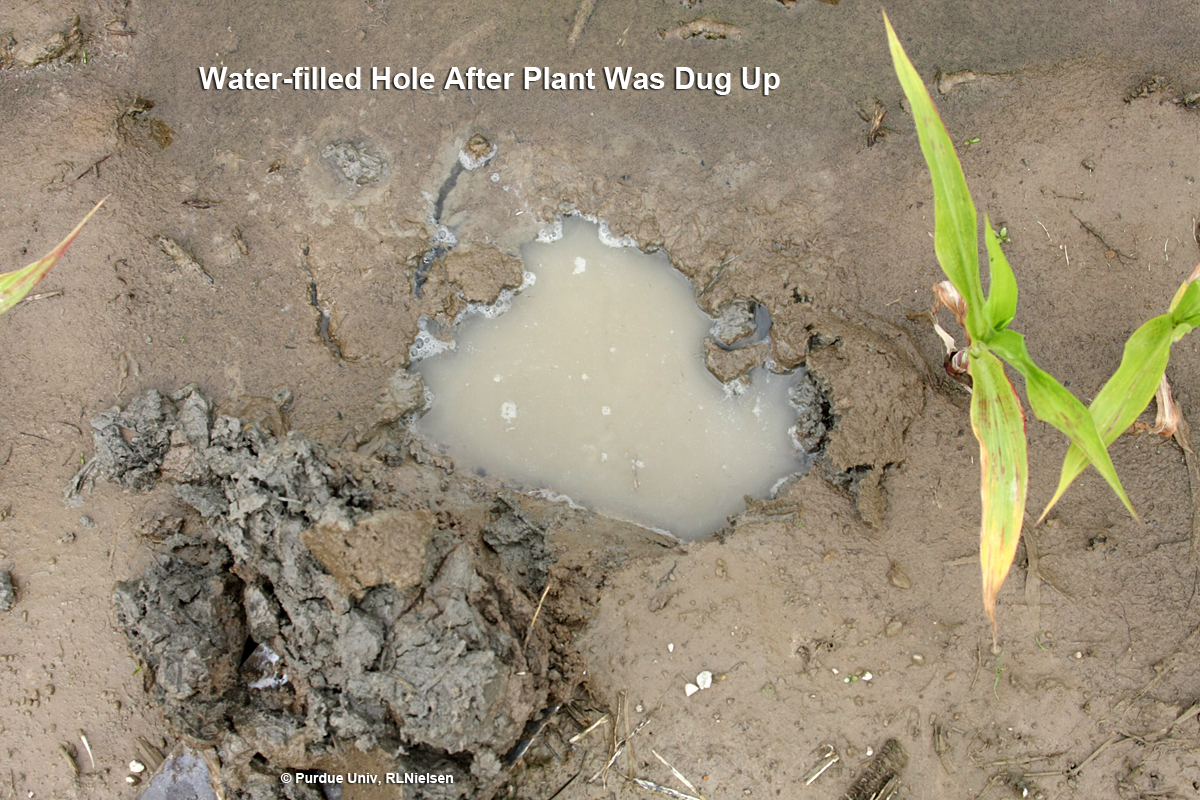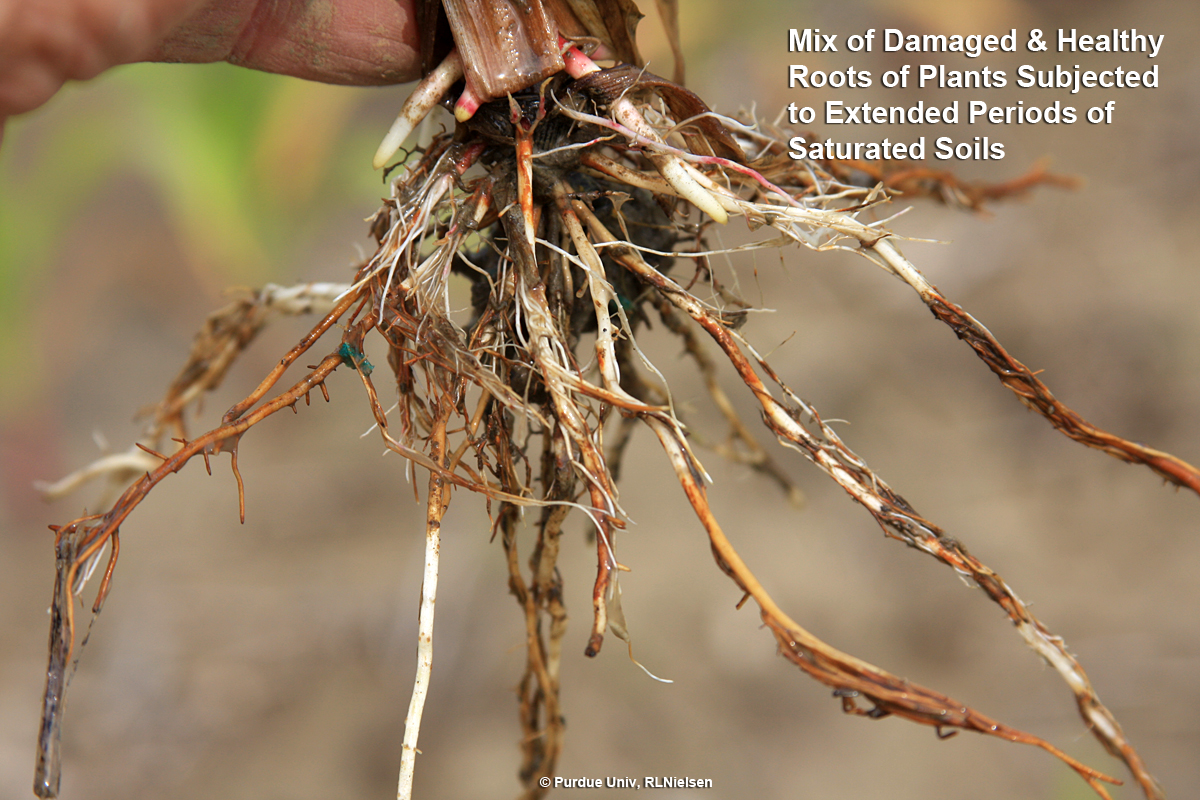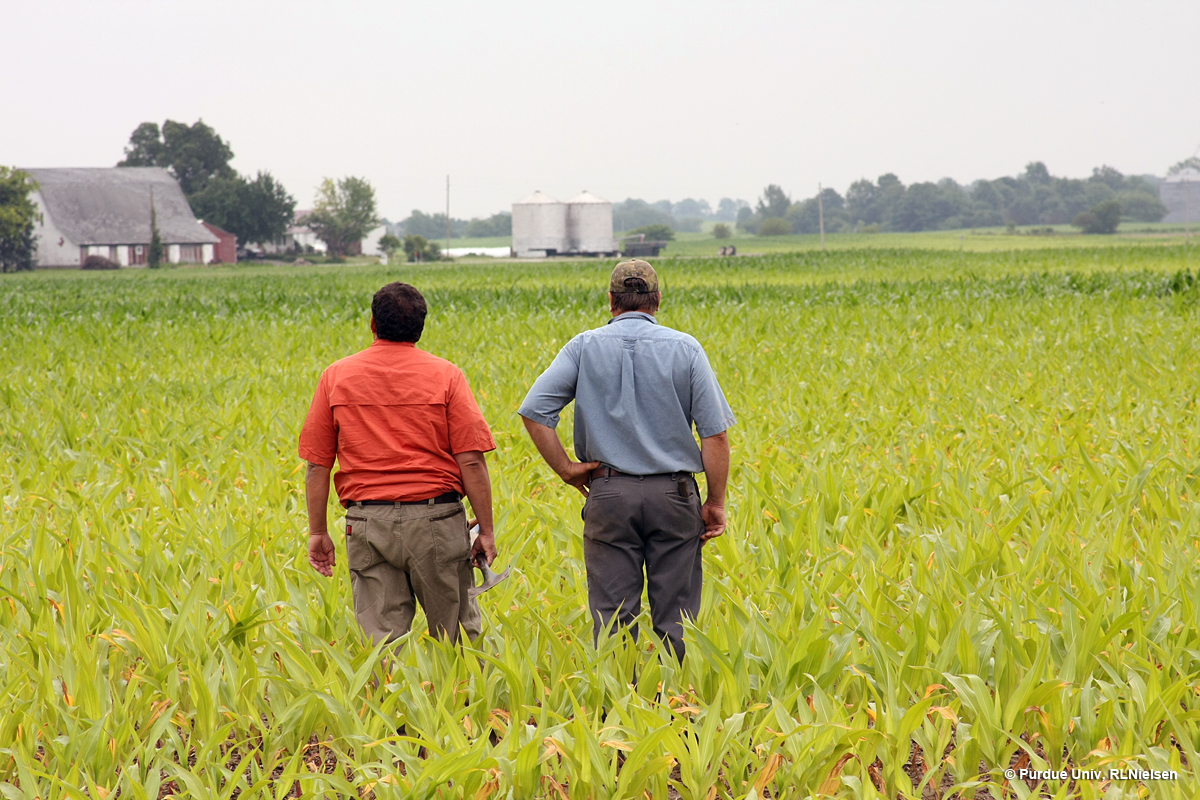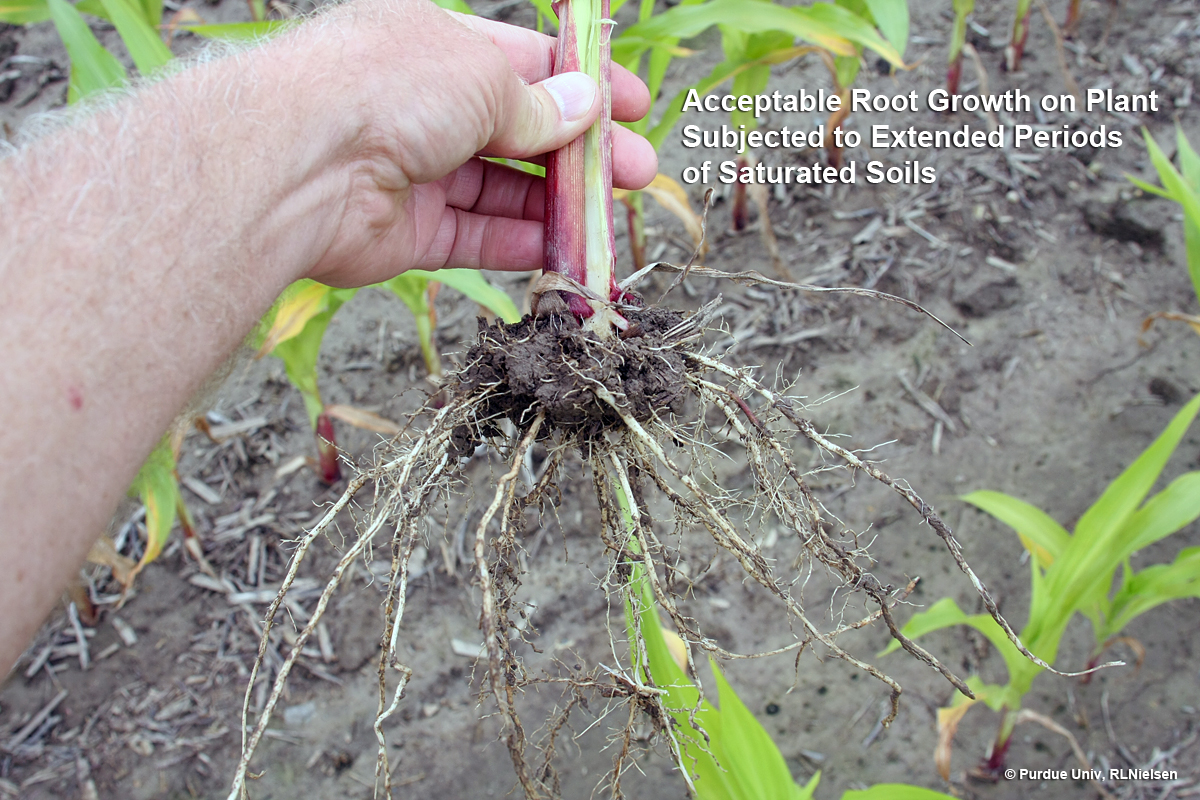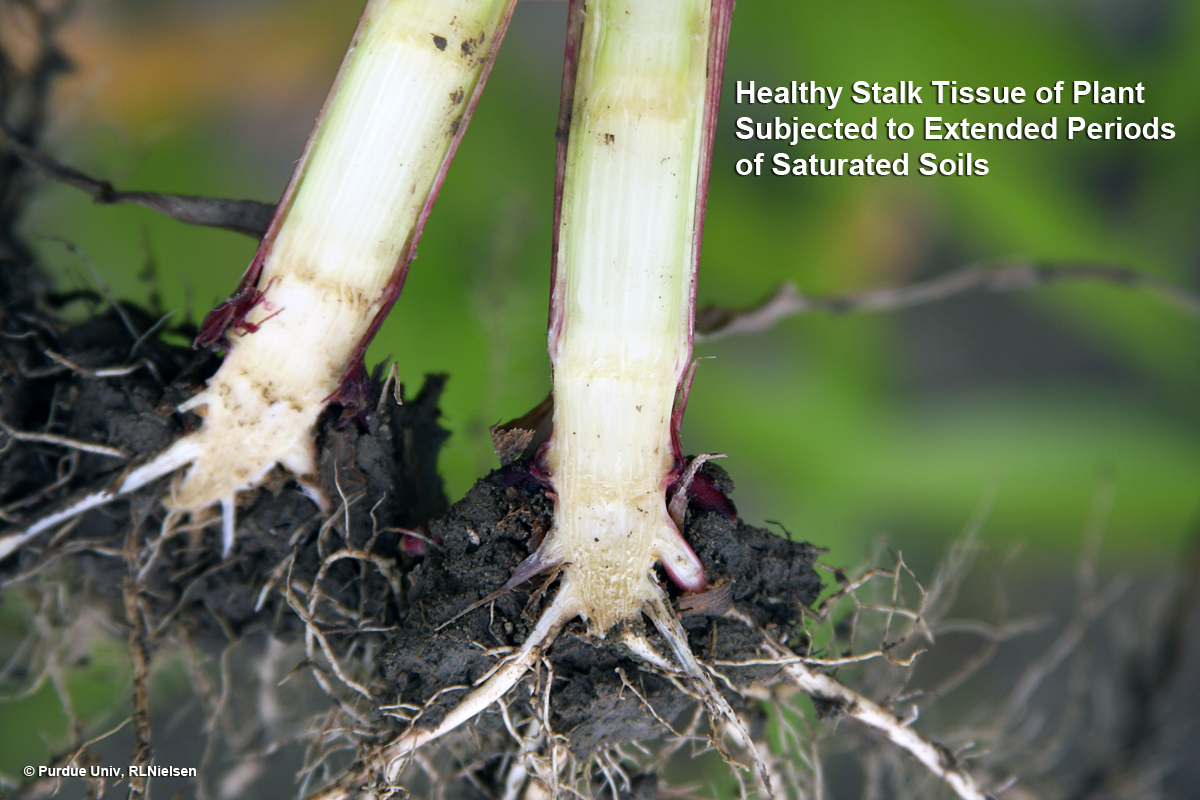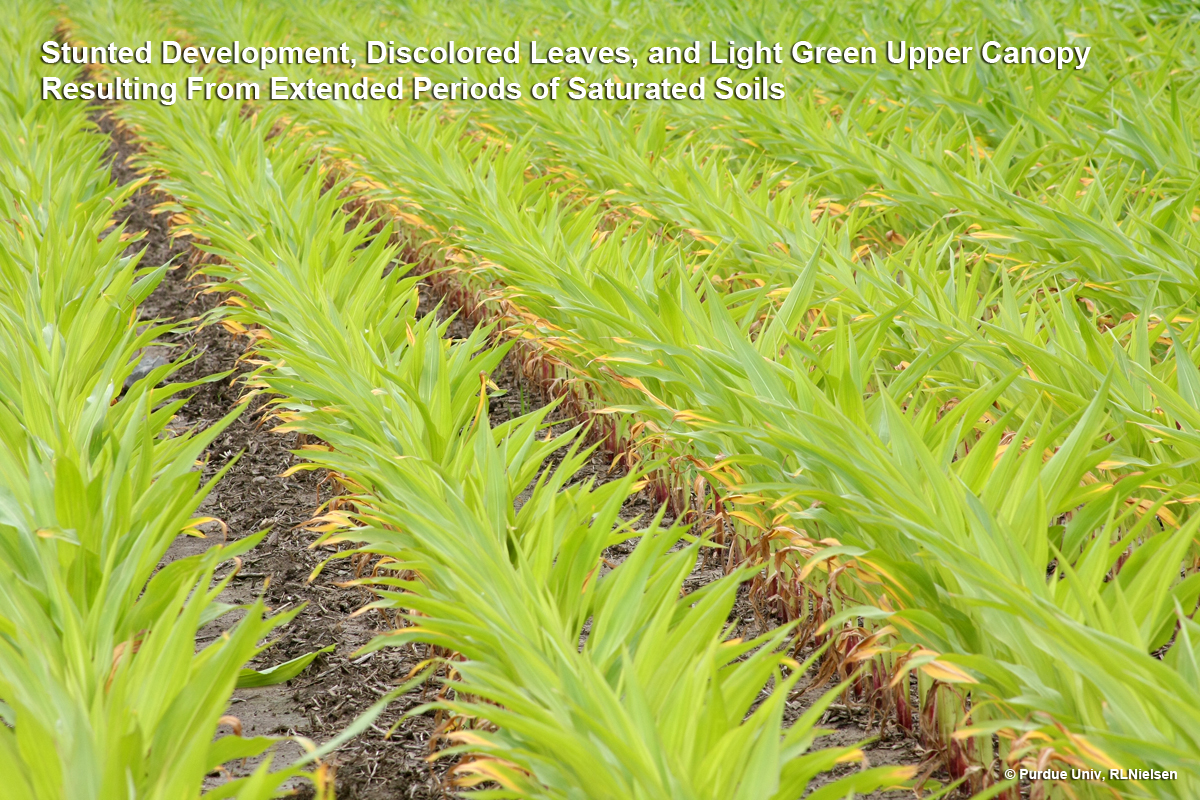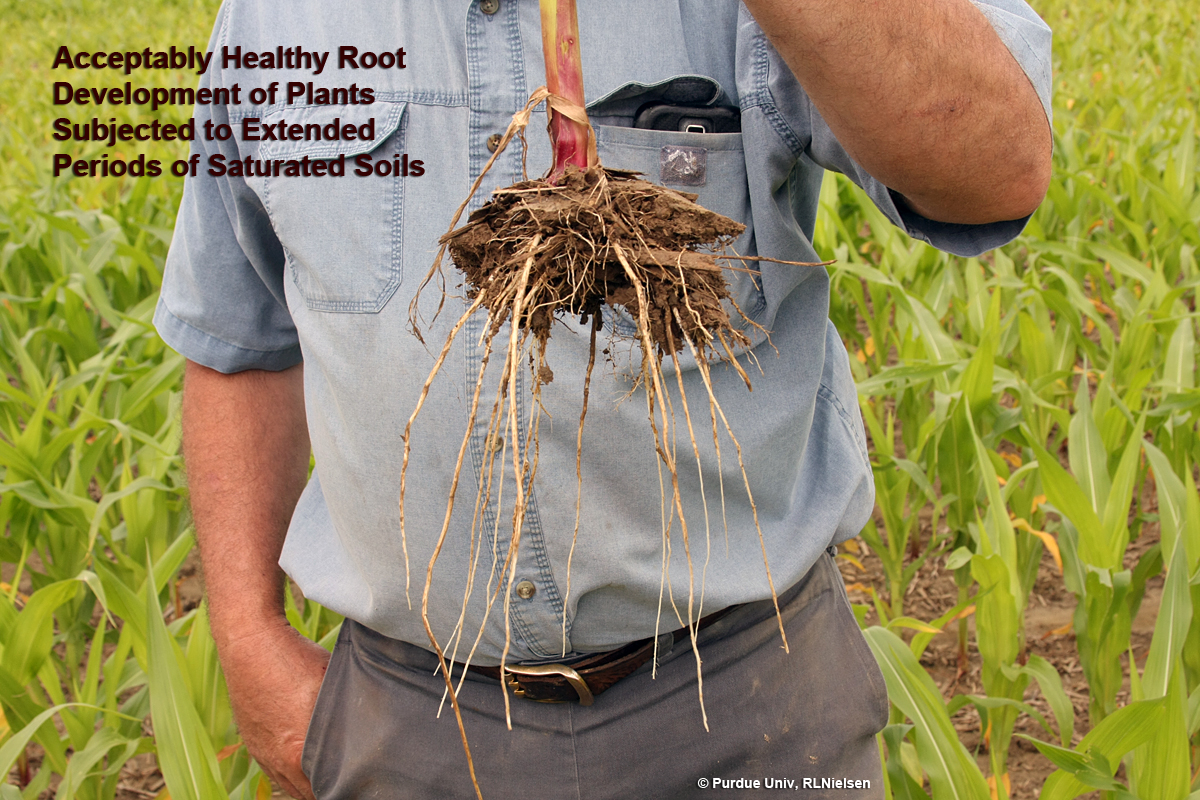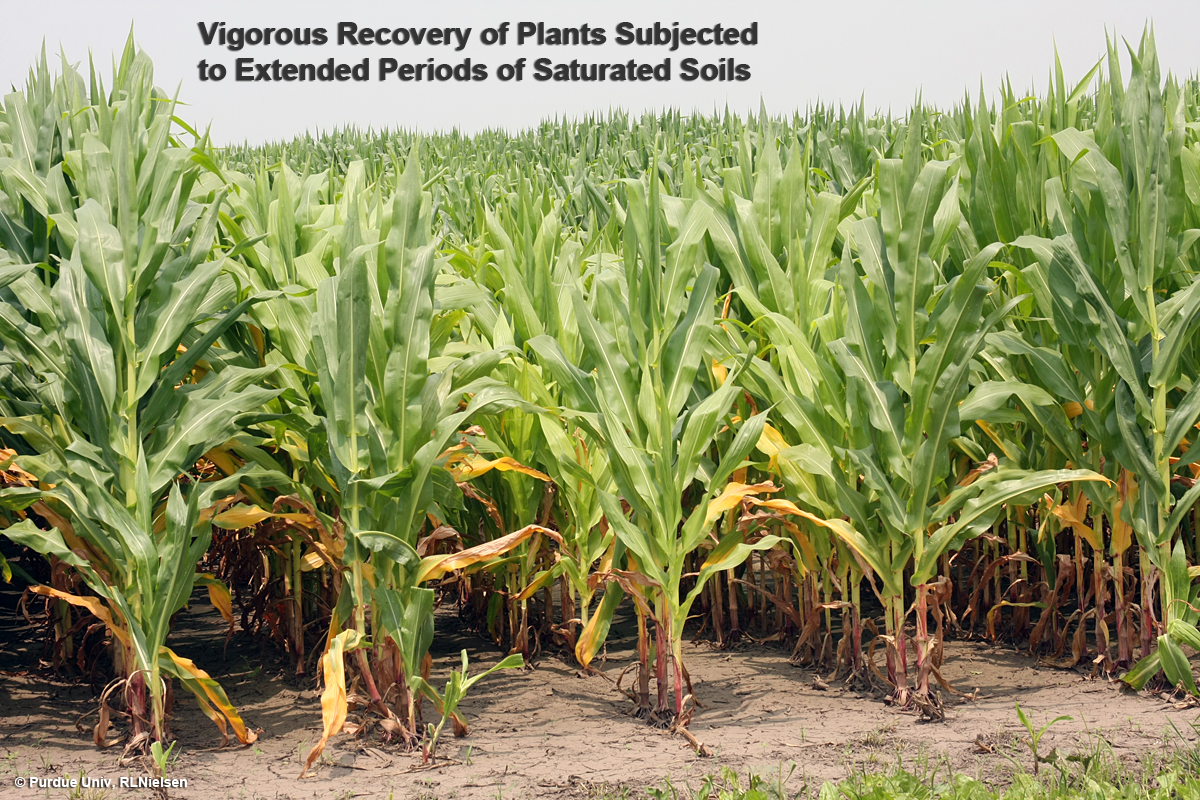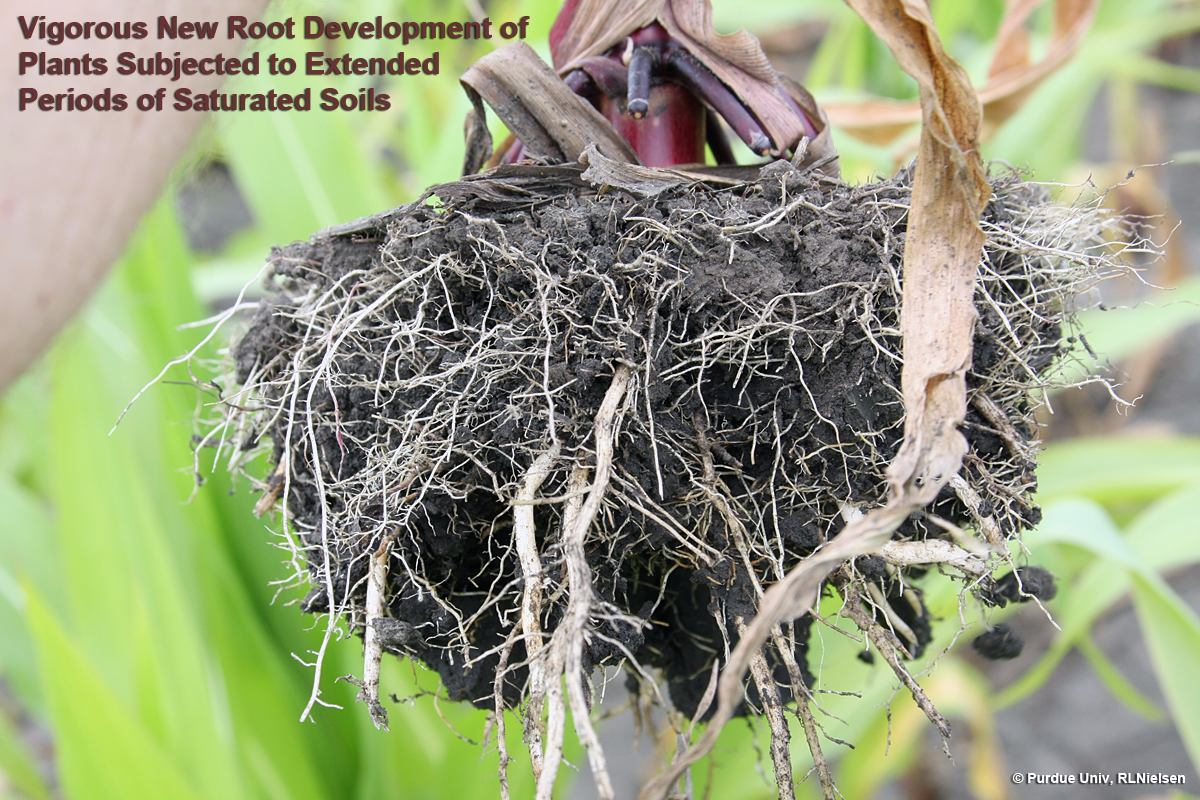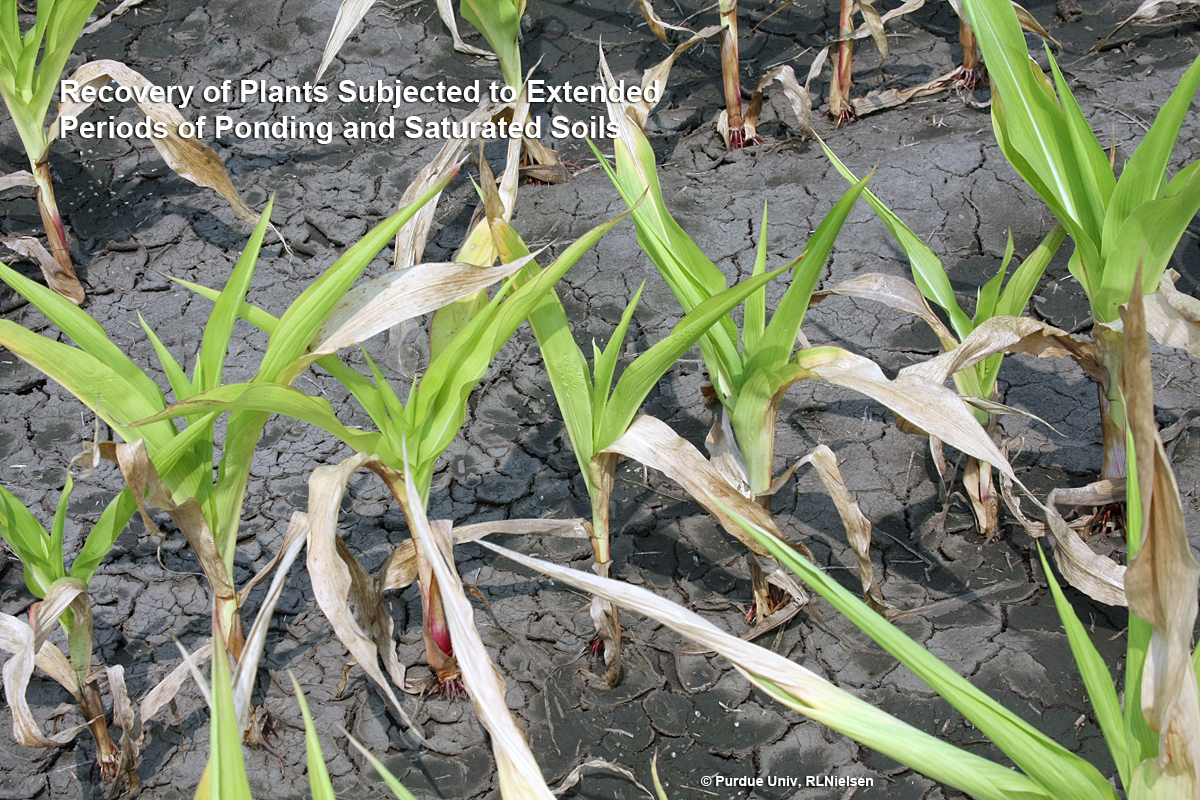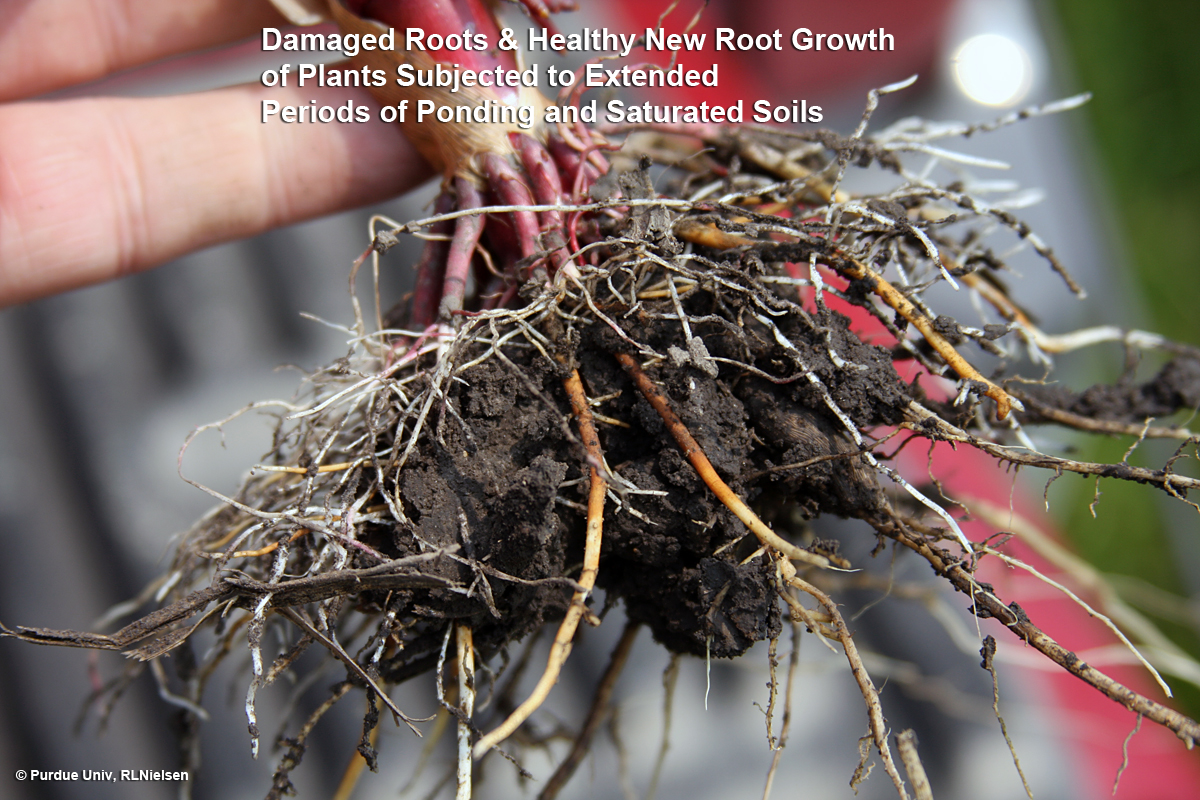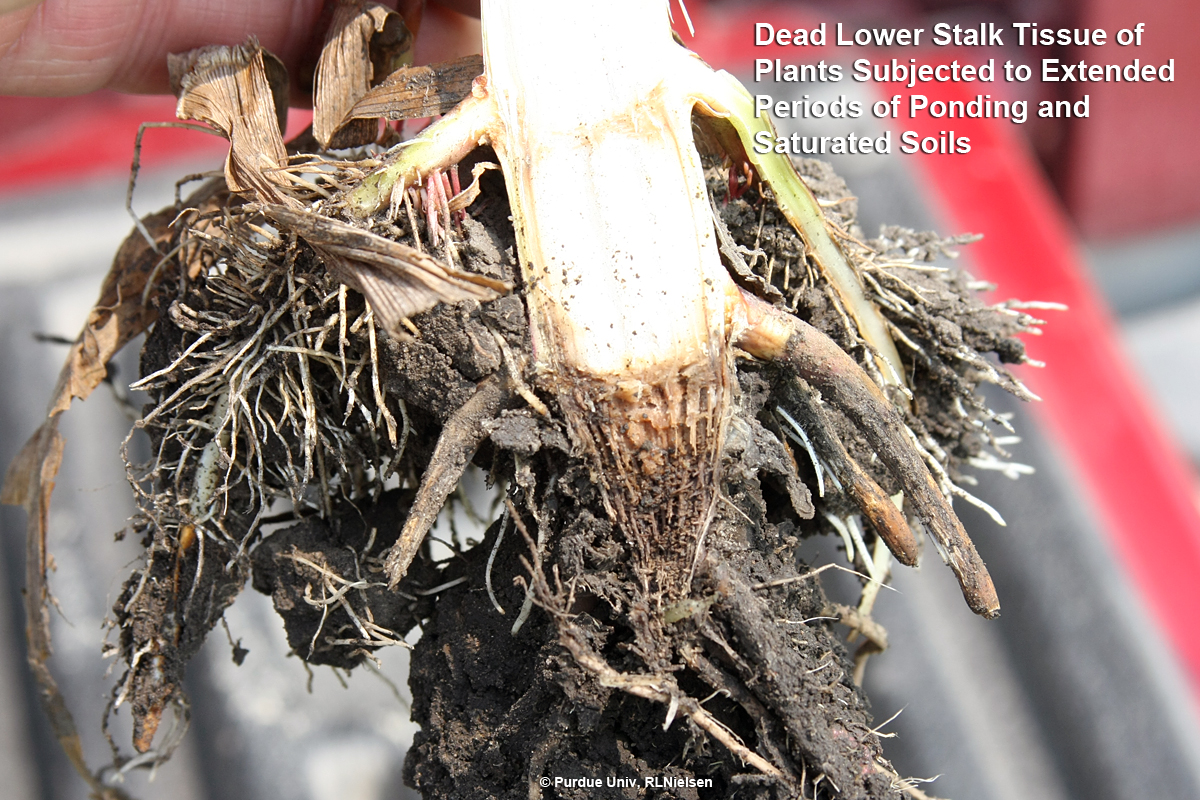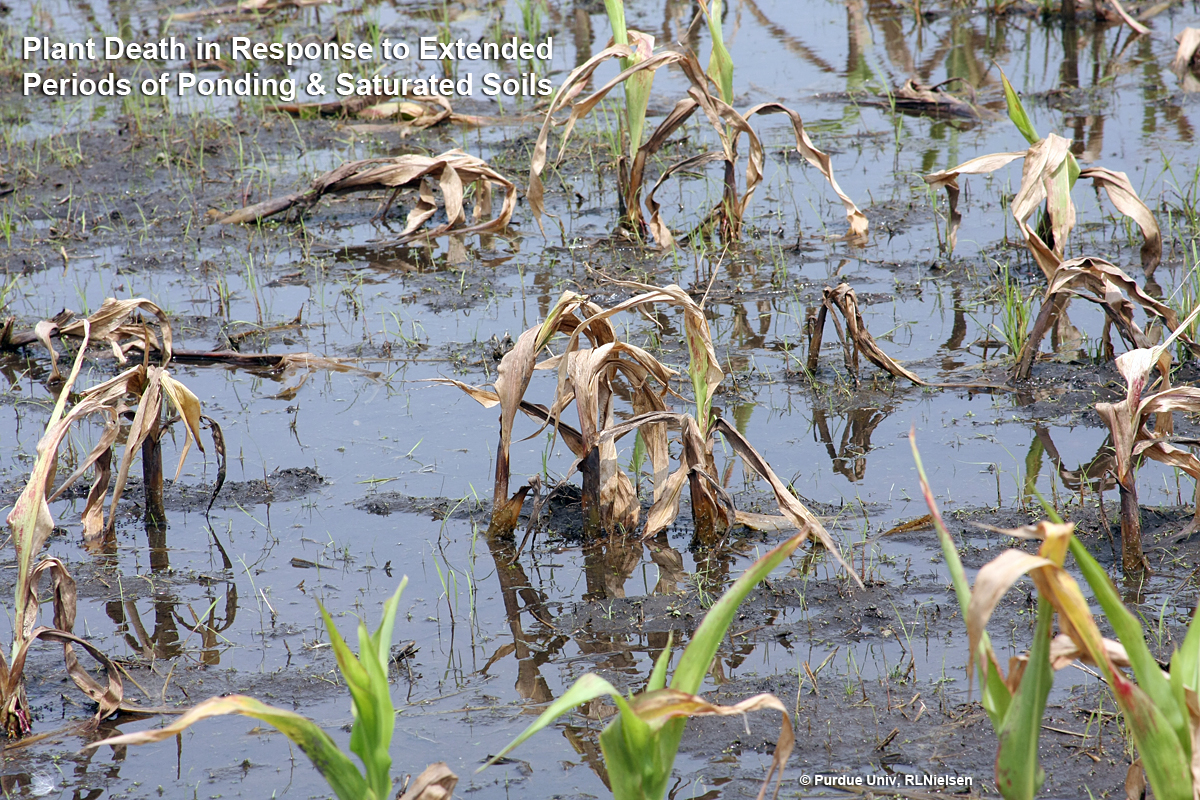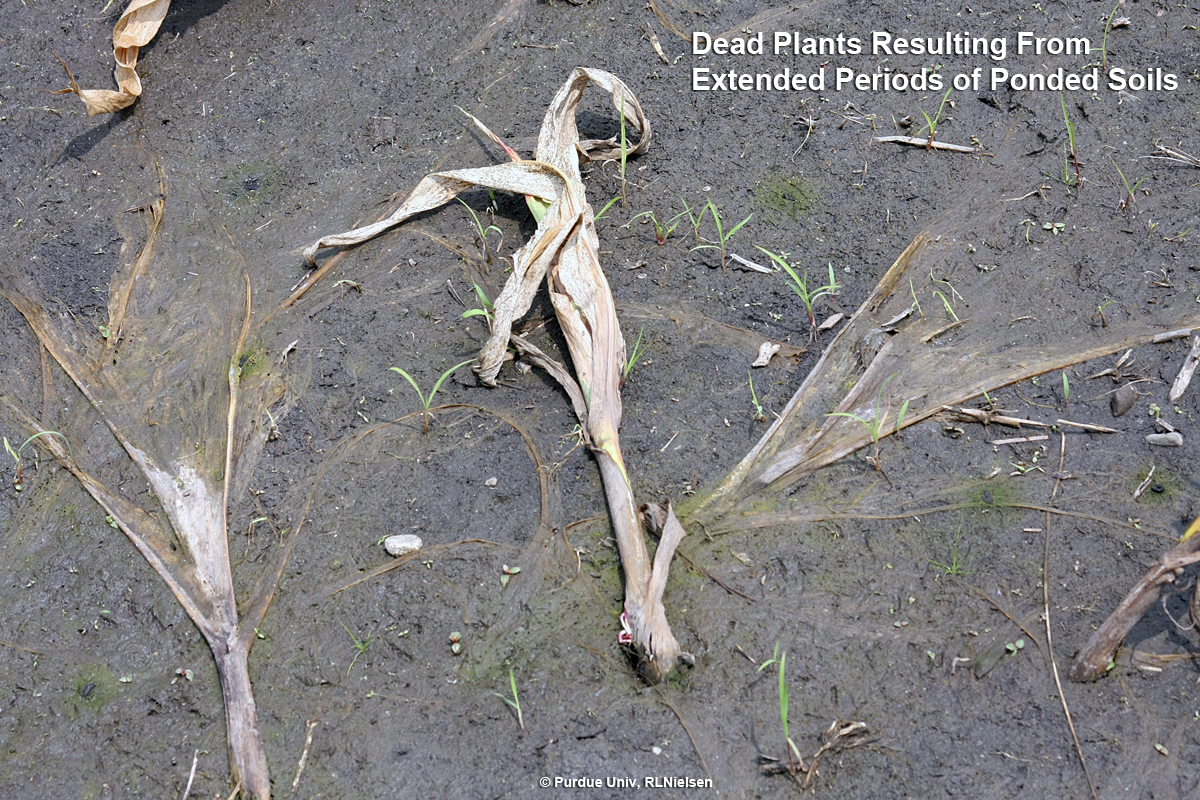

Poster of 1944 film Take It or Leave It; 20th Century Fox
7 July 2015
URL: http://www.kingcorn.org/news/articles_15/WaterloggedCorn_0707.html
Salvageability of Waterlogged Fields of Corn: That's the $64 Question
R.L. (Bob) Nielsen
Agronomy Dept., Purdue Univ.
West Lafayette, IN 47907-2054
Email address: rnielsen
at purdue.edu
The repeated occurrences of excessive rainfall throughout areas of Indiana early this growing season have certainly taken a toll on the health and outright survival of Indiana's major crops of corn and soybean. The most recent estimate of statewide corn crop condition by USDA-NASS pegs 21% of the state's corn crop as poor to very poor condition (USDA-NASS, 6 July 2015) and much of that poor rating is a reflection of the waterlogged soil conditions prevalent around the northern half of the state.
Farmers, crop consultants, bankers, and landlords all are asking whether waterlogged fields of corn, if not already dead, will recover to the extent that they can be considered salvageable. The answer to that $64 question helps to answer whether or not the damaged fields deserve either supplemental nitrogen (N) fertilizer or, perhaps, the originally intended but delayed initial sidedress application of N fertilizer.
Corny Trivia: The phrase "That's the $64 question" traces back to a CBS Radio quiz show Take It or Leave It that was on the air from 1940 to 1947. Contestants were asked a series of questions, each one more challenging than the last, in an attempt to win prize money. The first question was worth $1, with the value doubling with each successive question until the seventh and final question that was worth $64.
Assessing the likely survival and salvageability of corn fields that have sustained such lengthy periods of saturated soils, if not outright ponding, is not easy. With age and experience comes some benefits relative to assessing the salvageability of damaged corn crops. However, even us "gray beards" have not seen the likes of what Mother Nature has thrown in our way this season in terms of the sheer number of days of soggy soils and resulting crop damage.
Remember that the main effect on crop growth and development of saturated soils is the deterioration or death of roots due to oxygen deprivation. As soils begin to dry, new root growth (regeneration if you will) begins near the soil surface and "follows" the downward drying of the soil with time. It is the rate and extent of that fresh root development that largely determines whether a waterlogged field will recover "strongly" or not.
Bright sunshine and warm temperatures help "drive" photosynthesis by the above-ground crop canopy, which provides the necessary photosynthates to support renewed root development below ground. Cloudy, cool days during the recovery period simply slow the recovery process. Repeated re-wetting of the soil profile delays further drying of the saturated soil. Unfortunately, most of Indiana has not yet had a significant string of days with favorable growing conditions and so corn field recovery has been exceedingly slow and frustrating for growers.
However, it is worth remembering that the corn plant can be surprisingly resilient to early season damage and still recover to yield surprisingly well at the end. A few photos may provide some help in helping assess crop recovery in the coming days and weeks. Like it or now, the key word is still "patience" as this waterlogged crop shows us whether it will recover well enough to produce an acceptable grain yield at the end of the season or not. Much depends on what weather we receive from this point forward.
Click on images below to view larger versions.
Related reading
Camberato, Jim. 2014. Late-season nitrogen application for corn. Soil Fertility Update, Purdue Univ. Agronomy. http://www.agry.purdue.edu/ext/soilfertility/news/Late-seasonnitrogen.pdf. [URL accessed June 2015].
Camberato, Jim and RL (Bob) Nielsen. 2015. Assessing Available Nitrogen from Fall- and Spring-Applied Nitrogen Applications. Corny News Network, Purdue Extension. http://www.kingcorn.org/news/timeless/AssessAvailableN.html [URL accessed July 2015].
Nielsen, RL (Bob). 2015. Effects of Flooding or Ponding on Corn Prior to Tasseling. Corny News Network, Purdue Extension. http://www.kingcorn.org/news/timeless/PondingYoungCorn.html [URL accessed July 2015].
Nielsen, RL (Bob). 2015. Yellow, Stunted Corn... More Than One Possible Cause. Corny News Network, Purdue Extension. http://www.kingcorn.org/news/articles_15/YellowStuntedCorn_0615.html [URL accessed July 2015].

